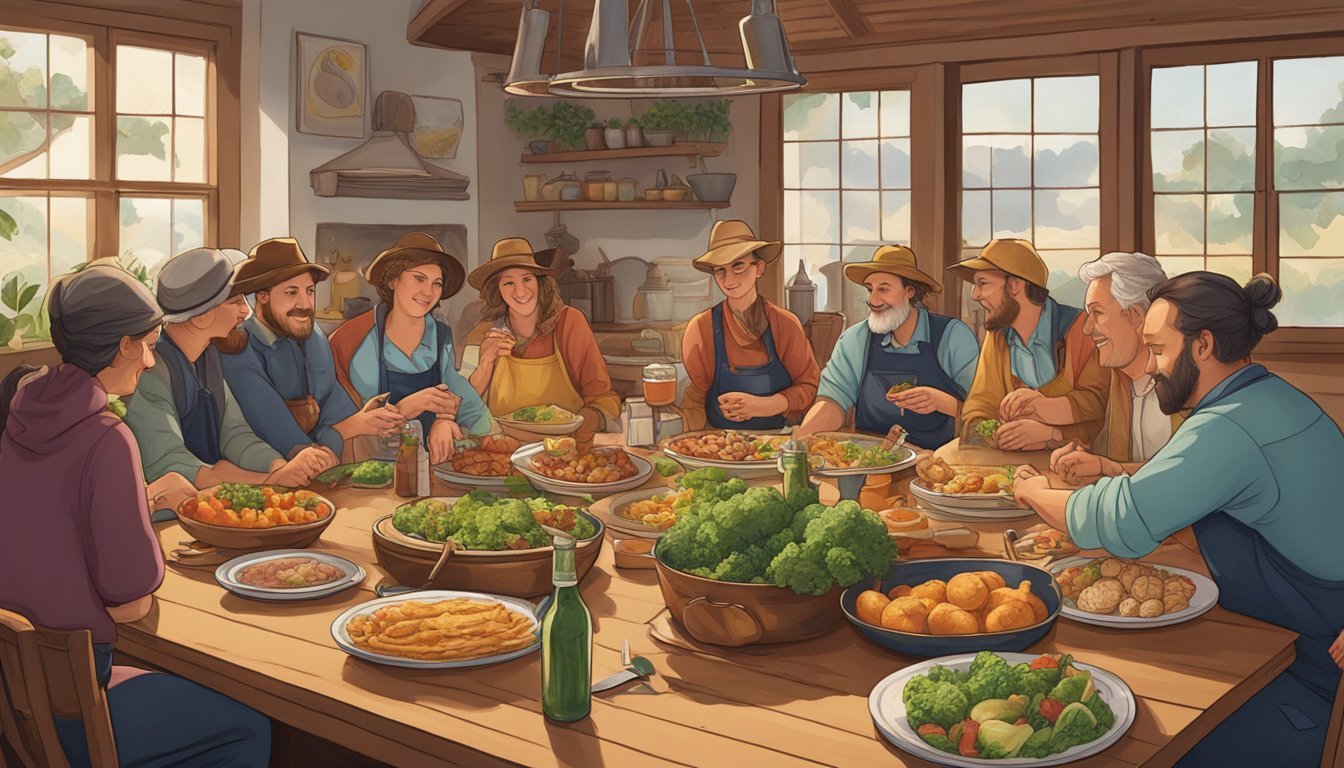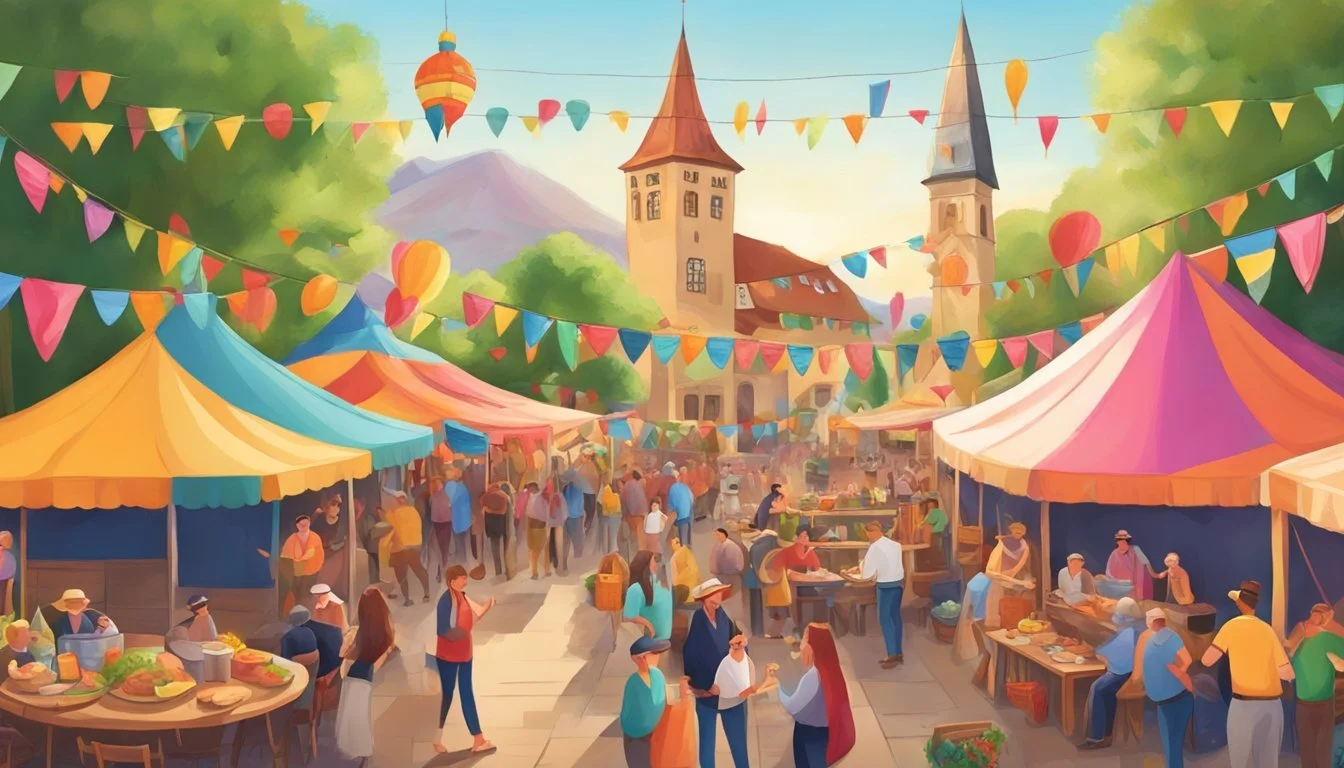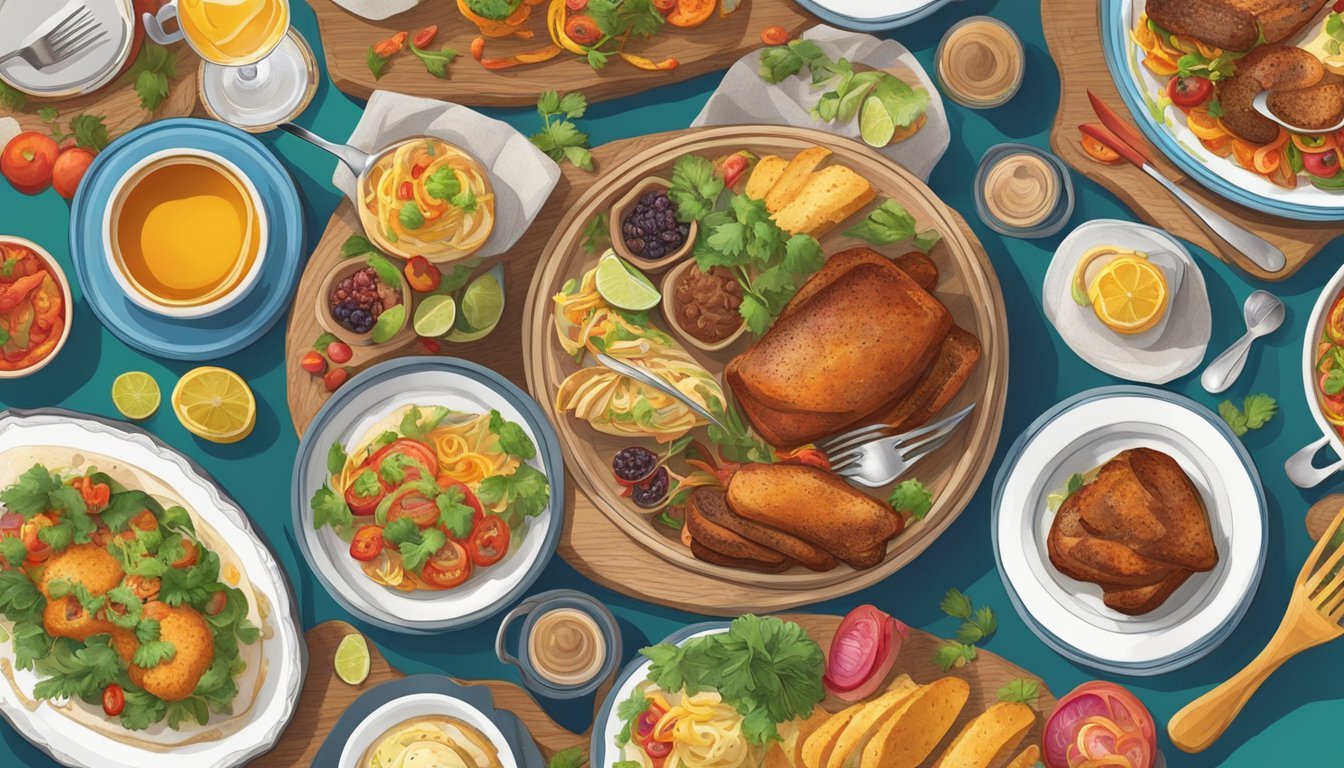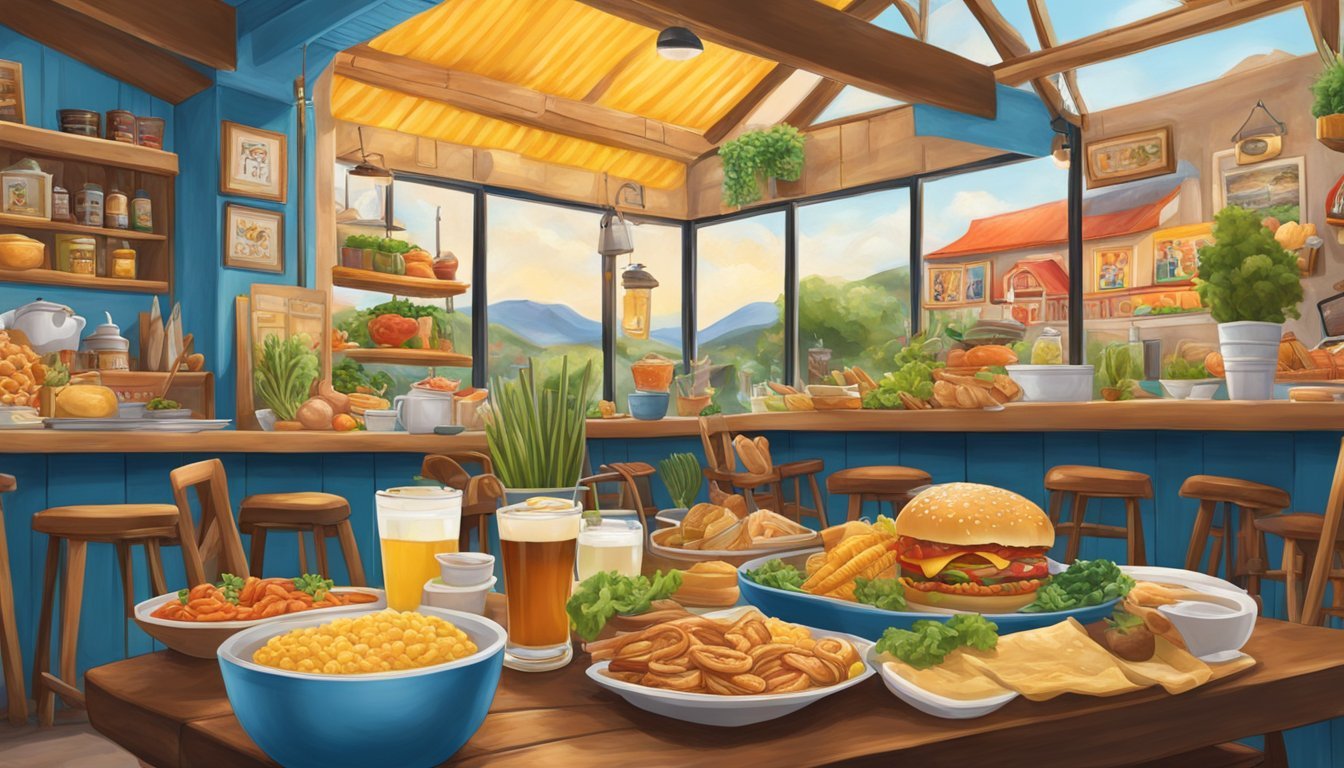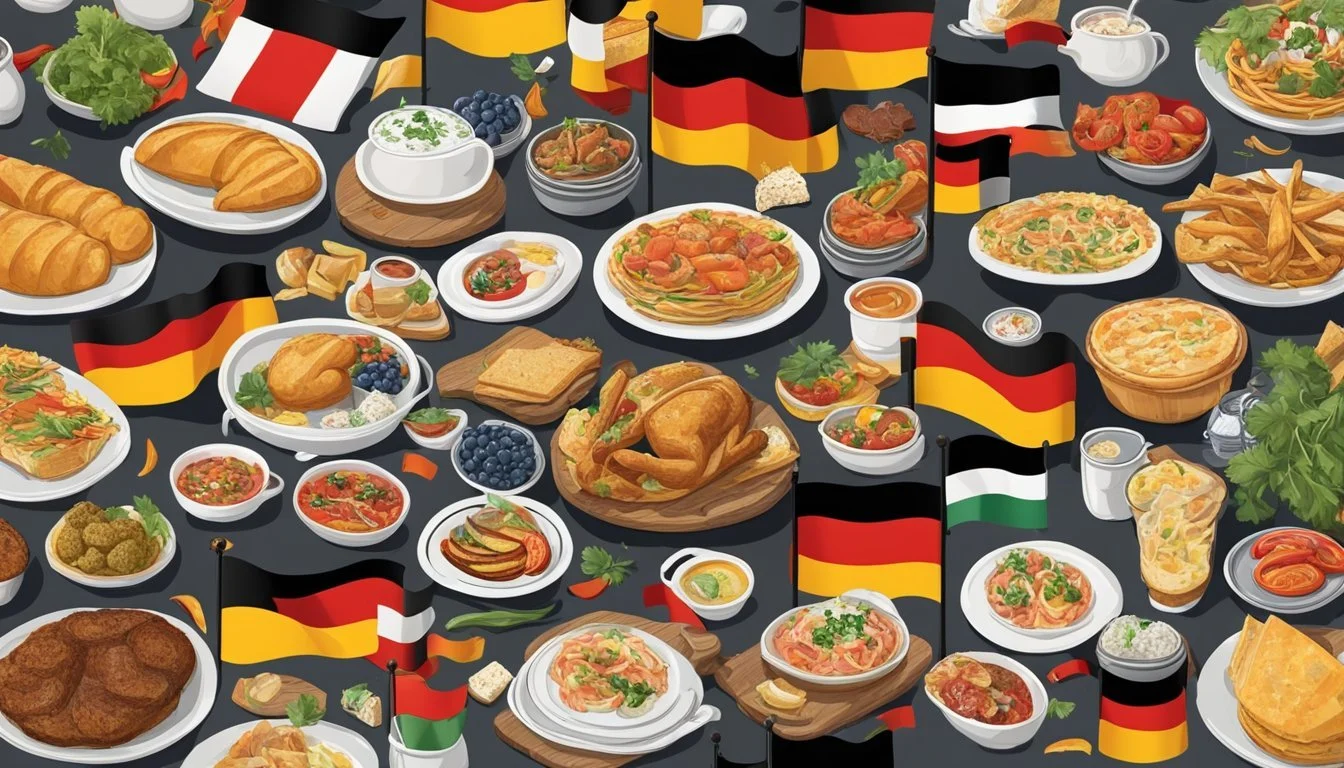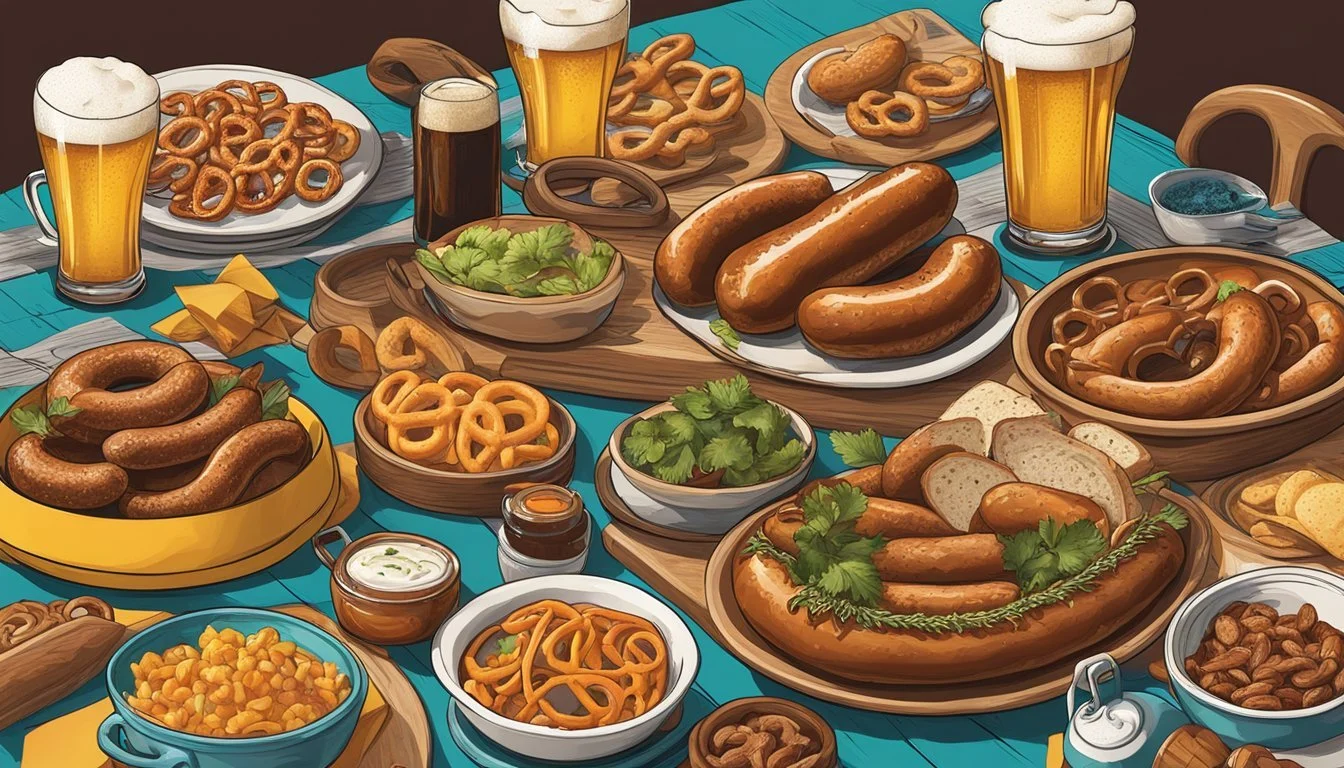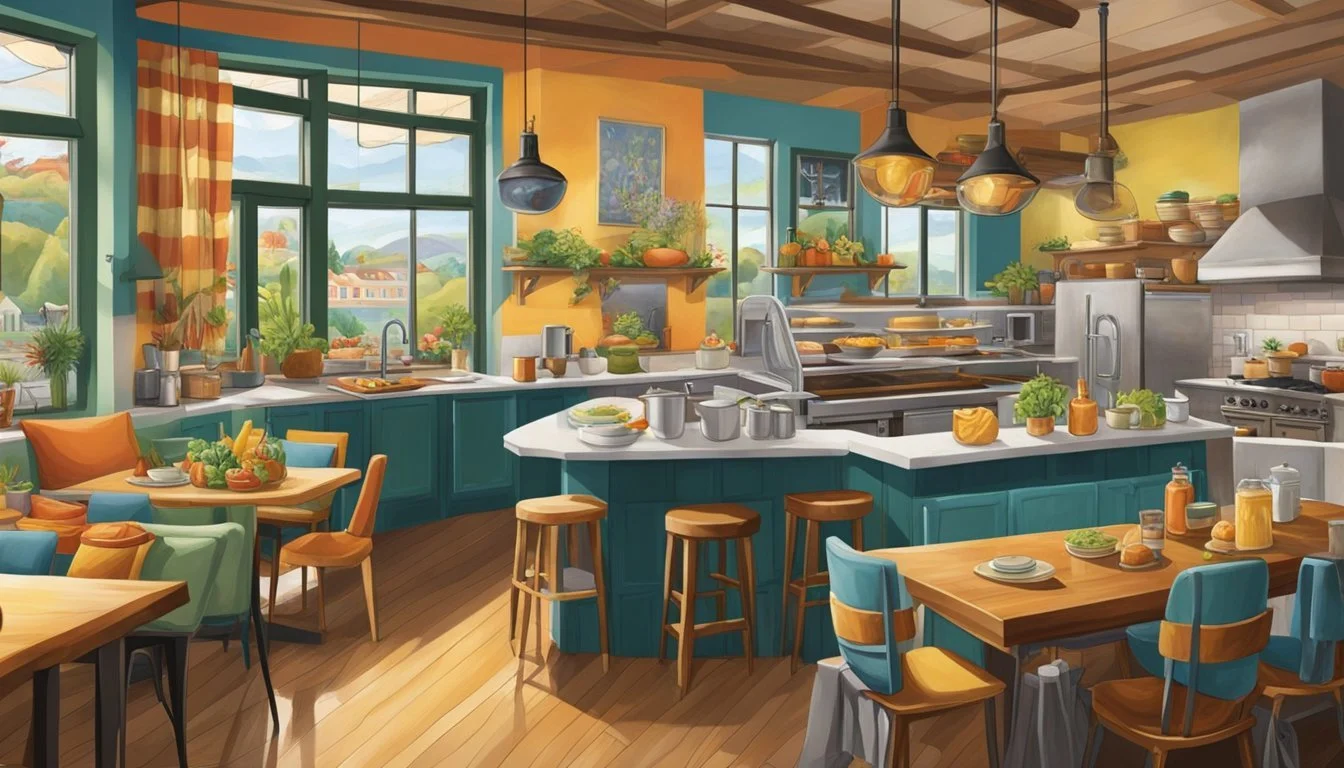German Texan Food and Art Collaborations
A Fusion of Cultural Expressions
German influences on Texan cuisine and culture present a unique fusion that stands out in the rich tapestry of American regional diversity. In Texas, German settlers left an indelible mark, intertwining their rich European heritage with the vast and varied cultural landscape of the Lone Star State. The art and food born from this blend act as a testament to the lasting bonds between these communities. This culinary and artistic synergy is rooted in a shared history that spans over a century, a period during which German Texans have maintained and celebrated their cultural identity through festivals, cuisine, and art.
Central to this German Texan identity are the enduring traditions and practices, particularly evident in the food. Smoked sausages, such as "Texas hot gut," are notable offerings that signify the melding of German methods with Texan tastes, taking advantage of local ingredients and adapting to the regional palate. These delicacies are commemorated annually at events like Wurstfest in New Braunfels, where over 100,000 visitors converge to indulge in authentic German-Texan fare.
In parallel to their impact on food, German influence pervades other cultural aspects such as Texan architecture, music, and celebrations, contributing to a well-rounded community dynamic. These collaborations extend beyond the plate to the canvas and stage, where the fusion of German and Texan sensibilities is performed and exhibited. Through these mediums, the heritage and culture of German Texans are not only preserved but also continually reinterpreted, ensuring their contributions remain a vibrant part of Texas’s evolving cultural landscape.
Historical Context of German Texans
The history of German Texans is marked by a wave of early immigration, the influence of notable societies and individuals, and the establishment of towns with enduring German heritage.
Early Immigration and Settlement
German immigrants settled in Texas during the 19th century, many enticed by the promise of new opportunities. Some of the first waves began in the 1830s, with a significant influx occurring in the 1840s. They established strong communities in Central Texas and significantly influenced areas such as Texas Hill Country. Key settlements like New Braunfels and Fredericksburg became centers of German culture in Texas.
Adelsverein and Prominent Figures
The Mainzer Adelsverein, formally the Nobility Society of Mainz, was instrumental in organizing and promoting the settlement of German immigrants in Texas. Prince Carl of Solms-Braunfels and John O. Meusebach, Adelsverein-sponsored commissioners, played pivotal roles. They negotiated land acquisition and established communities, with Prince Carl founding New Braunfels and Meusebach founding Fredericksburg.
Cities with German Influence
Fredericksburg, New Braunfels, and Boerne are quintessential examples of Texan towns with Germanic roots. In these cities, German culture has left a lasting impression through architecture, festivals, and community institutions. They reflect the blend of Texan and German influences, a testament to the German settlers' integration and impact on the regional heritage.
Culinary Fusion
In the heart of Texas, German cuisine (What Wine Pairs Perfectly With German Cuisine) melds with local ingredients and customs to form distinctive culinary creations that both honor German heritage and embrace Texan flavors.
Texan Adaptations of German Cuisine
German settlers in Texas brought with them their rich culinary traditions, which have since adapted to the local Texan context, leading to unique variations on classic dishes. Sausages and wursts, staples of German cuisine, have been embraced and modified in Texas, often incorporating local meats and spices. Similarly, sauerkraut has found a new home in Texas, served alongside barbecued meats (What wine goes well with barbecued meats?) as a tangy side.
German-Texan Sausage Variations:
Traditional bratwurst adapted with Texas beef or spiced pork.
Local versions of knackwurst, often smoked with mesquite.
Modified Side Dishes:
Potato salad, typically dressed with a vinegar-based Texas twist.
Sauerkraut may include jalapeños for added heat.
In addition to these adaptations, the concept of the beer garden has thrived, merging German communal drinking culture with the casual outdoor lifestyle popular in Texas.
Iconic German Texan Dishes
The fusion between German and Texan cuisines has birthed iconic dishes that have become a beloved part of the local food scene. Schnitzel, a thin breaded cutlet of meat, is often made from veal, pork, or chicken in Texas, served with a lemon wedge or creamy gravy.
Notable German Texan Dishes:
Dish Description Ingredients Schnitzel Breaded and fried meat cutlet, adapted to local taste. Veal, pork, lemon, gravy Sauerbraten A marinated roast, often using local beef. Beef, marinade, gingersnap Pretzels Soft or hard, larger and often served with mustards. Bread dough, salt, dipping sauces
These dishes are usually accompanied by a variety of bread, including rye and pumpernickel, reflecting the German emphasis on hearty, robust flavors. The art of home cooking is celebrated in these meals, with a focus on high-quality, often locally sourced, ingredients.
Cultural Celebrations and Festivals
Texas hosts a variety of festivals that pay homage to its German heritage. These events reflect the enduring influence of German culture through traditional food, music, dance, and, notably, beer-centric celebrations.
Oktoberfest in Texas
Oktoberfest is celebrated across Texas, reflecting the state's deep-seated German heritage. Towns like Fredericksburg, which was founded by German settlers, host annual Oktoberfest events. These festivals are replete with traditional German music, folk dances, and an array of German cuisine, especially bratwursts. The central feature of these celebrations is, of course, a wide selection of beers, served in a convivial atmosphere that invites both young and old.
Wurstfest and Other Celebrations
Wurstfest , held in New Braunfels, is a 10-day festival that draws crowds with its salute to sausages. Visitors savor a variety of sausages, partake in beer tasting, and enjoy entertainment that includes Bavarian music and dancers clad in lederhosen.
Other Celebrations go beyond food and drink, showcasing German-Texan craftsmanship in art and traditional attire. Cultural exhibitions and performances during these festivals keep German traditions alive, with the accordion and polka music laying the soundtrack for vibrant community revelries.
Artistic Integration and Legacy
The convergence of German heritage and Texan spirit is not only embedded in cultural festivities but also significantly reflected in the visual arts, architecture, and craftsmanship throughout German Texan towns.
German Influences in Texan Art
German settlers brought with them a rich tradition of visual arts, which has left an enduring mark on Texan culture. In towns like Fredericksburg and New Braunfels, one can see the influence on local art ranging from intricately designed beer steins, decorated with scenes reminiscent of the German countryside, to vibrant paintings that often capture the spirit of both the German and Texan landscapes. These artworks often serve as a testament to the cultural amalgamation that German immigration fostered in Texas.
Architecture and Craftsmanship
Architecture: German architecture has profoundly influenced the vernacular buildings of Texas. Notable for their practicality and simplicity, German settlers adapted their European architectural knowledge to the Texas climate and materials, resulting in a distinctive style that can be categorized as German Texan. Heritage buildings are characterized by:
Use of local stone (e.g., limestone)
Steep-pitched roofs
Broad, overhanging eaves
Some historic towns like New Braunfels and Fredericksburg continue to showcase these architectural styles, reflecting a commitment to preserving German Texan heritage.
Craftsmanship:
Craftsmanship in German Texan communities encompassed more than just architecture; it extended to everyday functional items that also held artistic significance. For example:
Handcrafted furniture with elaborate woodwork
Ironwork that includes detailed gate and grill designs
Such items exhibit a blend of German precision and the adaptation of the pioneers to the resources available in Texas, showcasing their resilience and creativity. These artifacts stand as a living record of the unique German Texan culture that continues to influence local traditions to this day.
German Texan Language and Education
In the intersection of German and Texan cultures, language and education form the crux of preservation and identity. The German Texan community strives to maintain their linguistic heritage through education and the daily use of the language.
Use of the German Language
German Texans have historically maintained their native language, integrating it into everyday life in central Texas. The community's resilience in preserving the German language has helped keep their cultural identity alive. Local organizations often facilitate the teaching of German in both formal and informal settings, ensuring that the language continues to thrive. The German-Texan Heritage Society (GTHS), since its inception, has been instrumental in providing these language learning opportunities.
German Texan Schools and Preservation
Schools: The initiative to sustain the German language also extends into the education system. Schools and educational programs specifically designed for different age groups, from children to adults, offer classes that are led by qualified, native or near-native German speakers. These classes often take place in the Greater Central Texas area with available options for online learning, catering to the needs of the wider community.
Preservation Efforts: German Texans have taken it upon themselves to establish various platforms and events where the language and culture can be celebrated and passed on. Beyond the classroom setting, the preservation of the language and heritage is supported by cultural events like Oktoberfest and German film festivals organized by entities such as the GTHS. These events provide immersive experiences that are critical for the preservation of German dialects and the broader German Texan identity.
Economic Contributions and Development
The German Texan community has played a pivotal role in shaping the state's economic landscape, particularly through agriculture, industry, and the establishment of businesses, including breweries which reflect their rich heritage.
Agriculture and Industries
German immigrants have had a significant impact on Texas's agricultural development. They introduced various farming techniques and crops from their homeland, thereby diversifying the state's agricultural output. Their influence is apparent in the viticulture industry with Fredericksburg in the Texas Hill Country being notable for its thriving wine production. They also ventured into other industries, such as meat processing and machinery, infusing German precision and efficiency into the Texan economy.
German Texan Businesses and Breweries
German settlers established numerous businesses that boosted local economies. From small shops to larger enterprises, they helped develop the commercial scenery of Texas. One of the standout contributions from the German community is in the brewing industry. Texas boasts a rich tradition of German-inspired breweries—a nod to the settlers' beer brewing heritage. These establishments often become local landmarks and tourist attractions, contributing to both the local community identity and the state's economic vitality. For example, Shiner Bock—produced by Spoetzl Brewery, founded by German and Czech immigrants, has become a well-loved Texan beer, not just for its taste but also its employment opportunities and economic contributions.
Modern-Day German Texan Identity
The melding of German heritage with Texan culture has shaped a unique identity that thrives in contemporary society, showcasing its influence distinctly through food and art.
Cultural Integration and Identity
German Texans, descendants of German immigrants, have maintained a strong cultural presence in the state of Texas. Their identity is a testament to the enduring legacy of early migrants who integrated their customs into the local lifestyle, creating a distinct German Texan culture. This integration is seen in their celebrations, language preservation efforts, and the transmission of traditions that honor their German roots while embracing Texan customs.
Celebrations: Annual festivals, notably Wurstfest in New Braunfels, which has evolved to include Texan influences alongside traditional German customs.
Language: Efforts to preserve the German language showcase a commitment to cultural heritage, with some residents still conversant in Texas German, a unique dialect.
German Texan Food and Art Scenes
Food and art serve as prominent vehicles for expressing the German Texan identity. Culinary contributions like the "Texas hot gut" sausage symbolize the fusion of German techniques with local ingredients. This hybrid cuisine encapsulates the essence of German Texan culture and features smoked meats and sausages as staples within Texan cuisine.
Food Scene:
Sausages: A cornerstone of German Texan cuisine, combining European smoking and curing methods with Texas flavors.
Festivals: Culinary events that celebrate the fusion of Texan and German flavors, attracting visitors from all over the United States.
Artists of German descent continue to contribute to the Texan cultural tapestry, often collaborating to produce works that reflect their dual heritage. The material culture of German Texans includes vernacular architecture that demonstrates how European styles were adapted to the Texan landscape, revealing an art scene deeply rooted in history and community.
Art Scene:
Architecture: Buildings that blend German craftsmanship with local materials and styles.
Collaborations: Artists working together to create pieces that exemplify the German Texan cultural fusion.
Conclusion
The intertwining of German and Texan heritages has fostered a unique cultural tapestry that continues to be celebrated within local communities. Food and art, as tangible expressions of this melding, serve as lasting reminders of the integration between these two cultures. German Texan contributions have been especially notable in culinary and artistic arenas, enriching Texas’s diverse landscape.
Culinary Influences:
German settlers brought their robust flavors and cooking traditions, leaving a discernible mark on Texan cuisine.
Signature dishes, like Southern fried chicken, bear the hallmarks of European frying techniques perfected by German immigrants.
Festivals like Wurstfest in New Braunfels illustrate the continued vitality of German culinary prowess in Texas.
Artistic Heritage:
German Texans utilized their European roots in shaping local architecture and material culture, evident in buildings and artifacts that dot the Texan landscape.
The art and artifacts of German settlers have been surveyed and recognized as important to understanding the broader tapestry of Texan history.
Cultural Integration:
Through shared traditions and the establishment of communal events, a fusion of German and Texan identities has occurred.
This legacy endures, not confined to history but part of the living identity of Texas, celebrated and perpetuated by both heritage communities.
In essence, German Texans have not only contributed to the state's folklore but have also ensured that their cultural footprint remains an integral part of Texas’s identity, thus creating a mutual enrichment that stands as a testament to the strength of cultural collaboration.


